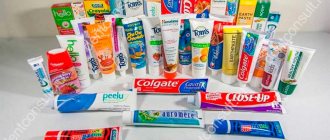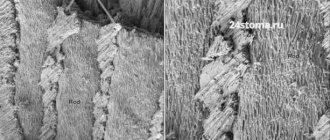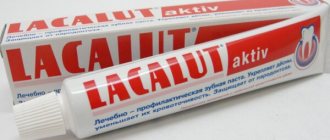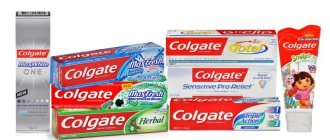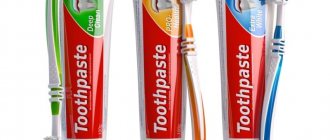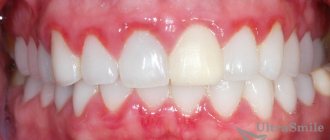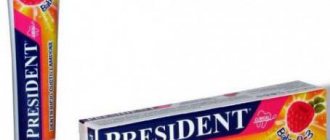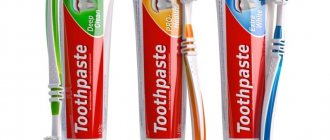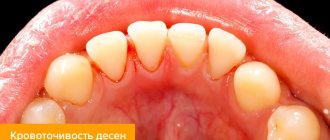Strong and beautiful teeth are every person’s dream. That is why special attention should be paid to proper oral hygiene. Toothpaste is an integral part of daily dental and gum care. It can not only maintain oral health, but also reduce the manifestations of various dental diseases. And today we will tell you everything about toothpastes, how to choose, what to look for in the composition, where to buy them.
How many of us buy toothpaste? They make a shopping list, go to the hypermarket and take the first one they come across. If this sounds like you, then most likely you underestimate the role of toothpaste in your health. A good toothpaste protects against caries, ensures that teeth do not lose minerals, and most importantly, does not harm the enamel.
In this article we will analyze in detail the compositions of modern toothpastes and tell you how to choose the right toothpaste.
Prevention of caries
Caries is the most common disease in the world. This is a pathological process of destruction of hard tooth tissues. It begins with a white spot and ends with pulpitis and various septic processes with inevitable tooth loss.
The main cause of caries is bacteria that produce acids. They wash fluoride and calcium out of the tooth tissue and weaken it. Frequent consumption of sweets accelerates the development of carious bacteria: carbohydrates are a favorite environment for their reproduction. Teeth with thinned enamel are also at risk: through microcracks, bacteria penetrate into the dentinal tubules and begin to destroy the tooth from the inside.
The most important stage in effectively combating caries is early diagnosis of the problem and, of course, prevention. Remove plaque at least once every 12 hours, and visit the dentist every 6 months!
In addition to caries, the TOP 5 most common dental problems are:
- Raid.
- Unpleasant smell.
- Sensitive enamel.
- Bleeding gums.
- Color change.
Read what is written on the package!
Perhaps the only question that buyers ask is whether to take a product with fluoride or calcium. Moreover, the majority prefer calcium, considering fluoride harmful to the body. This is true and not true at the same time.
In fact, fluoride prevents tooth decay. However, its excess can lead to fluorosis. This disease manifests itself as white spots on the teeth. Those products that can be seen on store shelves, as a rule, do not contain much fluoride and are not capable of leading to pathology. Another thing is special pastes in pharmacies; they should only be purchased with a doctor’s prescription.
Ideally, it would be nice to know what percentage of fluoride is in the water that comes out of the tap in your home. If this coefficient is large, then choose a paste where fluorine is not the main component.
What are the benefits of calcium?
- It restores the structure, saturating the enamel with useful minerals.
- The hard tissue of the tooth consists of more than 30% calcium. In the paste, the component serves to strengthen its mineral base.
- Calcium helps neutralize excess acidity, which is harmful to enamel.
Chamomile, sage and other herbs presented on the packaging are more of a marketing ploy. The consumer trusts everything that seems more natural to him, with a minimal chemical composition.
The SOS signal on the package means the following components:
- SLS is sodium lauryl sulfate. It gives abundant foam and a feeling of crystal clear enamel. Many manufacturers do not include it in pastes, as it is considered harmful to health. This is not a proven fact, so the choice is yours;
- NaHCO3 - sodium bicarbonate, baking soda. Slowly but surely destroys tooth enamel;
- CaCO3 is calcium carbonate, ordinary chalk, which is often included in cheap products. May leave scratches on enamel. You can use a paste with this component only if you don’t mind your teeth;
- Al2O3 – aluminum oxide. In most countries of the world, this substance is prohibited. There is no such ban in Russia, although the negative impact of this chemical component has been proven. Its main destructive property is the killing of brain cells;
- Triclosan – it is used as an antibacterial additive. However, by killing microorganisms in the oral cavity, it disrupts hormonal balance. The consequence is cancer, problems with the thyroid gland and heart.
Types of pastes
According to dentists, the best paste is the one that fully meets the needs of a particular person. Modern manufacturers have significantly expanded the range of their products. And now it is not just a means for cleansing plaque, but also an indispensable assistant in the fight against inflammatory processes, increased sensitivity of enamel, initial carious processes and many other problems. This is unconditional progress, but along with it another problem has appeared: an incorrectly selected product may not only not bring the desired result, but also cause harm.
But first, let's discuss the types of pastes. According to GOST 7983-99, all toothpastes are divided into:
- hygienic,
- therapeutic and prophylactic.
Hygienic pastes are designed for mechanical removal of food debris and plaque from enamel. They contain no drugs.
Therapeutic and prophylactic pastes are intended for the prevention of various oral diseases: caries, gingivitis, periodontal disease. Such pastes have antiseptic and anti-inflammatory effects.
Properties of toothpastes
When choosing a paste, it is important to pay attention to its abrasiveness, composition, consistency and taste. A properly selected paste will not only bring benefits, but will also make the cleaning process more enjoyable.
The abrasiveness of the toothpaste determines the intensity of the impact on the enamel. The degree of abrasiveness depends not only on the number of abrasive particles, but also on their size. The larger they are, the more they polish the enamel. The number and size of particles form the abrasiveness index, which is indicated on the paste packaging by the abbreviation RDA.
Types of RDA:
- RDA 0 - for children under 2 years old.
- No more than RDA 20 - for children from 2 years old.
- RDA from 20 to 50 - for sensitive teeth and gums.
- RDA from 50 to 80 - for normal teeth.
- RDA from 80 to 110 - for polishing enamel if you need a slight brightening effect (they should not be used daily).
- Above RDA 110 - for intense brightening effects (not recommended for chips and cracks of enamel, as well as for increased tooth sensitivity).
Due to the fact that children's enamel is even more sensitive than adult enamel (the surface of a child's tooth is much softer and contains fewer minerals), the composition of a child's toothpaste should contain abrasive substances to a minimum. Among them are soda and titanium dioxide. Such elements can activate sensitivity and damage dental tissue in children.
When choosing a paste, pay attention not only to its purpose, smell or taste, but also to its composition!
Main components
Abrasives are responsible for removing plaque, otherwise known as cleaning or polishing agents. These include baking soda, silicon compounds, calcium carbonate or calcium phosphate. More expensive toothpastes contain a substance called hydrating silica, which is a better alternative to baking soda or calcium phosphate.
The abrasiveness of toothpastes is determined using the abrasiveness index. On the packaging it is marked with the abbreviation RDA (Relative Dentin Abrasivity). This indicator was invented by the American Dental Association. RDA determines the ability of a paste to disrupt the structure of tooth enamel and produce mechanical effects (enamel abrasion). It is believed that effective plaque removal is achieved with RDA values just above 100. Regular toothpaste consists of half abrasive components. If it contains more than 50% polishing agents, it can cause tooth sensitivity.
Almost any toothpaste contains foaming agents that save consumption and help fight plaque. However, large amounts of such substances cause irritation and redness in the mouth.
Flavorings and flavoring additives are added to the paste. Also, for normal consistency, toothpastes need binders (also called hydrocalloids) - components that help retain moisture so that bacteria do not grow in the paste, and preservatives.
Without all these components, toothpaste will not work. However, often instead of harmless natural flavors, abrasives and preservatives, chemists use harmful and life-threatening substances.
What components to look for?
Calcium is the main element of the skeletal system. This mineral strengthens teeth and protects them from caries. Paste with calcium can eliminate caries in the initial stage.
Zinc citrate is an antiseptic that blocks the growth of bacteria and the hardening of minerals that form tartar.
Xylitol is one of the most effective natural components for protection against caries. Actively fights bacteria, restores enamel and increases its strength, moisturizes the oral cavity.
Papain and bromelain are natural enzymes that lighten enamel naturally. They give a more delicate and not as strong whitening effect as peroxides.
Natural extracts are natural anti-inflammatory and antiseptic components that can be used daily. Effective complementary therapy for minor bleeding and inflammation of the gums.
Hydroxyapatite is a modern and effective means for restoring and renewing enamel. Fills microcracks and prevents the formation of caries.
Peptides are organic substances that restore damaged gum tissue by normalizing its functioning at the cellular level.
Remineralizing pastes
The products are designed to strengthen the enamel by saturating it with calcium and phosphorus compounds. Typically, pastes contain calcium citrate and calcium glycerophosphate. To get the proper effect, you need to brush your teeth for at least three minutes.
In addition to toothpastes, remineralizing gels are used at home: they are applied to the teeth and left for the time specified in the instructions for the product.
The use of remineralizing agents is especially indicated for children from 6 years of age, during adolescence, when permanent teeth appear, intensive skeletal growth occurs and the need for calcium increases. Pastes are also recommended for pregnant women, as their tooth enamel often suffers from a lack of calcium.
Toothpastes - how to choose the right one
A good oral care product should not only be effective, but also be as safe as possible. Some manufacturers saturate their products with components, a high concentration of which can cause serious harm to human health in general.
Products based on plant components do not contain harsh chemicals and provide gentle cleansing. Essential oils and extracts of medicinal plants must be supplemented with surfactants (surfactants) - without them, high-quality cleansing is impossible. It’s another matter if the surfactants themselves are of a plant nature, and then we can confidently call the product completely natural. This is a good choice for children as well as adults!
Criterias of choice:
- A type of pasta.
As mentioned above, you need to choose a product based on individual needs and indications. If there are no problems with your teeth and gums, a prophylactic paste would be the best option. If there are problems with the enamel or the condition of the mucous membrane, it is worth considering treatment and preventive options. But in this case, you must first consult a dentist.
- Ingredients included.
Be sure to read the ingredients carefully before purchasing. If there are allergy sufferers in the family, it is important to make sure that there are no components that can provoke allergic reactions.
- Degree of abrasiveness
The presence of abrasive particles ensures high-quality mechanical cleaning of plaque and allows you to return your teeth to their natural whiteness. On the other hand, too long exposure of this kind leads to injury to the enamel, its thinning and hyperesthesia.
- Taste and smell
As for taste and smell, these criteria are left to the discretion of the user. Sometimes a too strong taste can cause unpleasant sensations or even gag reflexes - this also needs to be taken into account.
Adult toothpastes
Such toothpastes have the ability to eliminate pathogenic bacteria and freshen breath. Prevents the appearance of plaque and tartar.
✅Toothpaste “Comprehensive care” LAVERA
The toothpaste contains organic echinacea and calcium, which have an anti-inflammatory effect on the gums and improve the health of the oral cavity.
The highly effective fluoride-free formula is rich in natural minerals, gently cleanses, protects the oral cavity from bacteria and freshens breath! With regular use, it prevents the appearance of tartar. Suitable for children. Does not contain fluorine and microplastics.
The German brand Lavera is the first in Germany among organic cosmetics! And the Germans, as you know, know a lot about the quality of natural products!
The naturalness and safety of the product is confirmed by the international standard NATRUE.
✅Refreshing toothpaste “Mint” COSLYS
Toothpaste, thanks to its 100% natural formula with calcium carbonate and aloe vera, gently cleanses teeth and prevents plaque.
Stevia extract, menthol and mint essential oil provide a pleasant, refreshing taste. Does not contain fluorine, titanium dioxide and synthetic dyes.
The French brand Coslys not only produces natural cosmetics, but also cares about reducing its eco-footprint.
The naturalness and safety of the product is confirmed by the international standard COSMOS ORGANIC.
Unflavored toothpastes
Such pastes are suitable for pregnant women, people with various taste intolerances and for homeopathic treatment. They do not contain mint and do not cause nausea.
✅Organic toothpaste for pregnant women (for allergy sufferers) AZETA BIO
The toothpaste was created specifically for pregnant women and people with various taste intolerances. Its delicate, special taste does not cause nausea.
Thanks to its special formula with aloe and xylitol, it perfectly protects and cares for tooth enamel and gums. And Barbados aloe extract provides a mild soothing and antibacterial effect.
Clinical studies confirm that regular use of toothpaste reduces the formation of plaque and the number of microorganisms that cause caries. The naturalness and safety of the product is confirmed by the international standard AIAB bio eco cosmesi.
✅Toothpaste “Zero Balance” SPLAT
Hypoallergenic toothpaste is odorless and has a subtle sweet taste. Great for protecting against tooth decay and keeping your breath fresh.
Active components: silver in active form (a powerful antibacterial component and antiseptic), potassium glycyrrhizinate (an active component of licorice root, which has anti-inflammatory and antibacterial effects), perilla seed extract (suppresses the growth of cariogenic microorganisms, preventing the formation of caries).
Clinically proven effectiveness after 4 weeks of use:
36.3% anti-caries effect - 36.3%, cleansing effect - 63.6%, anti-inflammatory effect - 37.5%.
Children's toothpastes
Children's teeth are especially susceptible to tooth decay because tooth enamel is not yet as strong as that of adults. In addition, caries of primary teeth has a direct impact on molars.
Children's toothpaste should not contain fluoride and its derivatives! According to statistics, about 30% of toothpaste is swallowed by young children while brushing their teeth, so children's oral care products should be as safe as possible.
Children are allowed to use adult toothpastes from the age of 14; until this time, parents must buy special children's products.
You can read more about caring for baby teeth in the article “TEETH CARE FROM CHILDHOOD - DENTIST’S ADVICE.”
The requirements for this category of pastes are special. This is exactly the case when you cannot trust only one package. The components in the composition must be gentle.
Foaming agents in children's toothpastes should be contained in minimal quantities or completely absent. Flavoring and aromatic additives should be natural ingredients.
✅Children's toothpaste “Strawberry-Cherry” SPLAT
The toothpaste is intended for children from 2 to 6 years old. The innovative LUCTATOL® system based on licorice extract and lactic enzymes destroys cariogenic bacteria and blocks their further development.
The effectiveness has been clinically proven: cleansing effect - 41.7%, remineralizing effect - 34%, anti-inflammatory effect - 48.4%.
Intensive strengthening of enamel is ensured by calcium hydroxyapatite (nHap).
Active ingredients: grape seed extract (effective in combating the cariogenic bacterium Streptococcus mutans), L-Arginine (helps strengthen enamel), Aloe Vera gel (has an anti-inflammatory effect)
✅Organic toothpaste with xylitol “Raspberry” AZETA BIO
The toothpaste is suitable for children from 3 to 7 years old. Specially designed for gentle care of delicate gums and tooth enamel. The natural remedy prevents the development of osteoporosis because it helps increase bone density.
Xylitol promotes calcium absorption and improves enamel mineralization. The substance stimulates saliva production and reduces plaque deposits.
Aloe juice extract has an anti-inflammatory, astringent effect, soothes irritated gums and aphthae.
Sorbitol has an anti-caries effect, which is associated with a decrease in the production of organic acids in the enamel.
Environmentally friendly composition and packaging made from renewable and recycled materials.
The naturalness and safety of the product is confirmed by the international standard AIAB bio eco cosmesi.
About the “scary” stripes on toothpaste tubes
You can find stripes on toothpaste tubes. The stripes have different colors and there are many opinions about this, and often just rumors.
What are the colored stripes on toothpaste tubes for?
Many people believe that different colors indicate the degree of “naturalness” of a toothpaste. For example, if the strip is black, then it is a very harmful toothpaste (as it contains the most “terrible” chemical components).
Of course this is not true! This strip is just a signal to the machine on which the tube of toothpaste is produced that one tube has run out and needs to be separated.
As for the color, it is usually a color contrasting with the main background of the tube so that the machine picks up this signal.
Often it matches the color of the main text on the tube or is close to it (which reduces the cost of paint in the production of toothpaste). Be sure to see this for yourself when you pick up a tube of toothpaste. Moscow metro station Zvezdnaya, Danube Avenue, 23
